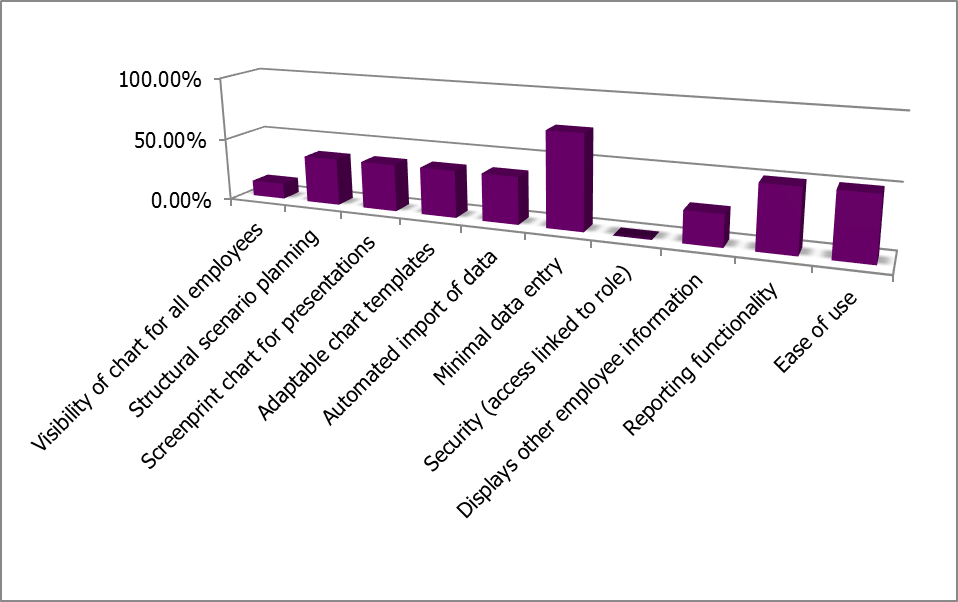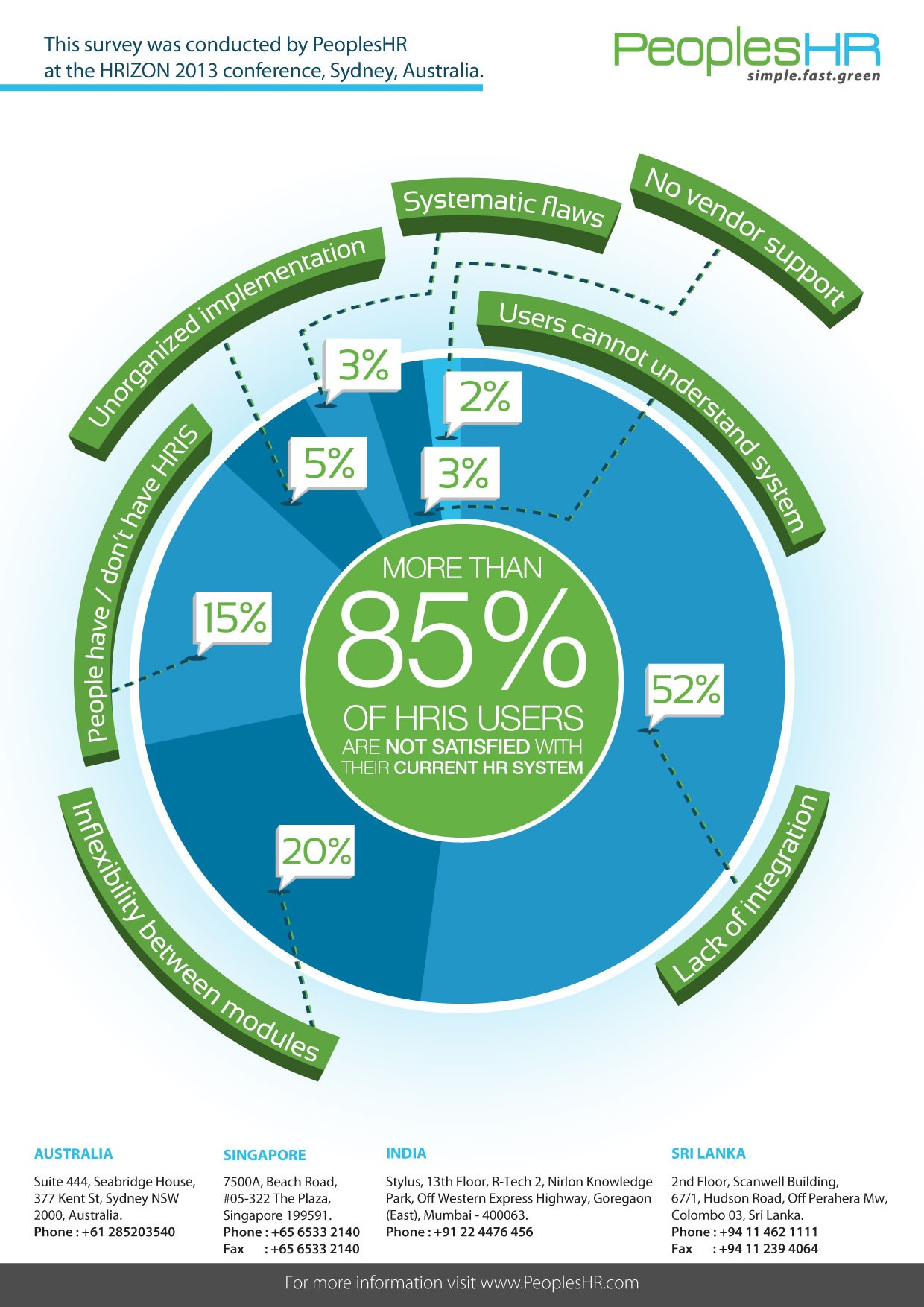BLOG – ORGANISATION CHART MANAGEMENT
Organisation Chart Management – Current gaps, demands and trends
Key findings at a glance
The demands of a modern day organisational charting tool are growing in line with the growth in technological advancements within the workplace. Not content with the basic ‘boxes and lines’ solution HR practitioners are seeking a tool that aligns with business needs. It’s about doing things smarter!

Organisation chart usage
Org. charts are typically the most viewed HR document within an organisation. It can assist with the orientation of new employees, provide clarity in reporting lines and approval authority along with identifying all of the roles/positions within an organisation.
The organisation chart is a document that has the widest range of uses in human capital management and is also relied upon by Finance and IT functions. It is often the first point of reference for the following activities;/p>
- succession planning
- recruitment
- internal communication
- learning and development
- delegated authorities
- system access

Survey overview
A number of Australian organisations were invited to participate in the survey during Spring 2013. Responses were treated anonymously. Respondent participation covered a wide cross section of industrial sectors including; manufacturing, resources, legal, education, technology and professional services.
Detailed findings
Current solutions
The most popular tool for many small organisations is PowerPoint, Visio is often used in SMEs and in larger organisations Org Plus and Org Publisher are common. However, the most common solution for organisations overall is a tool within the existing HR/payroll software environment.
Common frustrations
As a result of using basic Microsoft applications a number of frustrations arise. The core information is available but data entry is often time consuming and minimal additional functionality is available.
Many free web based tools are now available and although some of these offer better quality graphics than your basic Excel or Visio products there is little intuitive functionality available resulting in heavy data entry reliance.
While many of the modern day HRIS systems have greater levels of intuitively within the org chart module and minimize data entry requirements by drawing on existing HR data, this part of the system is viewed as non-core and as a result the final output is basic. Functionality such as scenario planning and additional information along with easy access for all are often missing.
In larger organisations the heavyweight products including Org Publisher are often used and although these programs are well designed, they also come with a large price tag beyond the budget of many SMEs or low margin businesses including retail and not for profit.
Recently mid-range options have become available which capture additional employee information beyond the position title and employee name and are able to draw from a number of information sources to ensure the information is both up to date and requires minimal data entry. One such example is OrgView that can ‘live link’ to Active Directory, Outlook and a payroll system to provide a portal to view data from these sources. With security control features employee access can include viewing of names, roles, departments, out of office messages, skill sets, work contact details. While secure manager access can include performance ratings, birthday information, next of kin. With a system of this nature the organisation chart functionality starts to encroach upon the territory previously reserved for the HRIS. Therefore, this functionality could also provide a useful data source for small businesses without a HRIS.
CASE STUDY
‘As an IT consultant I was asked to undertake a software implementation project within West Mining Co. I asked the person who engaged my services if they could give me a copy of the organisation chart to identify key stakeholders across the 10 sites involved in the project. After being told ‘there wasn’t an organisation chart available’ I looked at the phone list and worked my way through, unfortunately the latest version was not up to date and I spent hours calling people to find they were no longer in the business, or no longer in the role indicated on the list, in addition to this I couldn’t see who to contact instead. To complicate things further the fly in/fly out roster meant that when I finally tracked down the right people it was challenging to determine their availability. In the end I had spent my first full two days on the project compiling my own organisation chart rather than working on the project I was engaged to undertake! This had incurred unplanned costs for the organization and kicked off the project in a frustrating manner’.
How much productivity is wasted in your organisation in situations similar to this?
*This account is based on a true story however the names have been altered
Common system issues include
- Data is out of date
- Significant time required for data entry
- Double entry of data increases risk of errors
- Lack of access can impact upon productivity
- Lack of clarity in who does what in an organisation
However these problems can easily be overcome with the right system selection and there are options currently available which can offer a return on investment (ROI) within as little as one year.
Key Functionality
To begin to deliver ROI it is recommended that the following factors and functionality be considered within a vendor selection process.
- Access for all relevant stakeholders (including contractors)
- Workforce scenario planning for mergers, acquisitions, new projects and other business change
- Interface with existing data systems
- User friendly interface
- Ability to access software via mobile devices

Desirable org. chart functionality as stated by HR practitioners
Summary and recommendations
Opportunities for practitioners
The starting point for any potential changes to software is a business process review in order to determine and define the scope for the software.
False economy is the main pitfall to avoid, often the free downloads or current Microsoft Office programs are restrictive and cumbersome resulting in lower levels of productivity in the HR team and beyond. Similar issues are also found within some HRIS environments.
Specific off the shelf org. chart solutions with the ability to customize data fields are typically the best choice, this helps cut costs within implementation and ongoing maintenance but still enables a close alignment to business needs.
Appendix 1

Disclaimer | Privacy | Case Studies | About Us | FAQ | © 2023 OrgView. All rights reserved.
